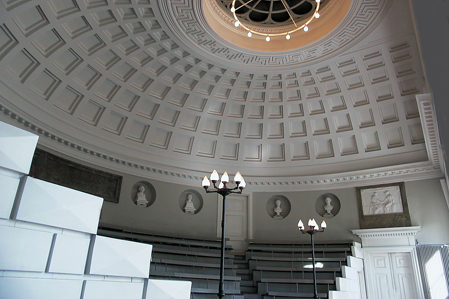BACTERIA, ART AND OTHER INCOMMODITIES Bacteria / Copenhagen 15th of May 2015
Bacteria in Arts, Sciences and Humanities: On 15th May 2015 in Medical Museion and the IKK, University of Copenhagen, an international conference in cooperation with Goethe-Institut Dänemark and MICRO HUMAN Berlin will take place
The event is the second co-production within the Strategic Partnership in Arts and Culture between the Goethe-Institut Dänemark and the Department for Art and Cultural Studies (IKK) of the Copenhagen University. It is curated by Slavko Kacunko, Jens Hauser and Sabine Kacunko, and realized in collaboration with Medical Museion (Copenhagen) and Micro Human (Berlin). Invited experts from Denmark and Germany will discuss the potential of the emerging network to intertwine social, philosophical and industrially relevant perspectives and ways of thinking, between art-based research and research-based art, architecture and art history as well as media- and literature studies through to epistemology, medicine and synthetic biology.
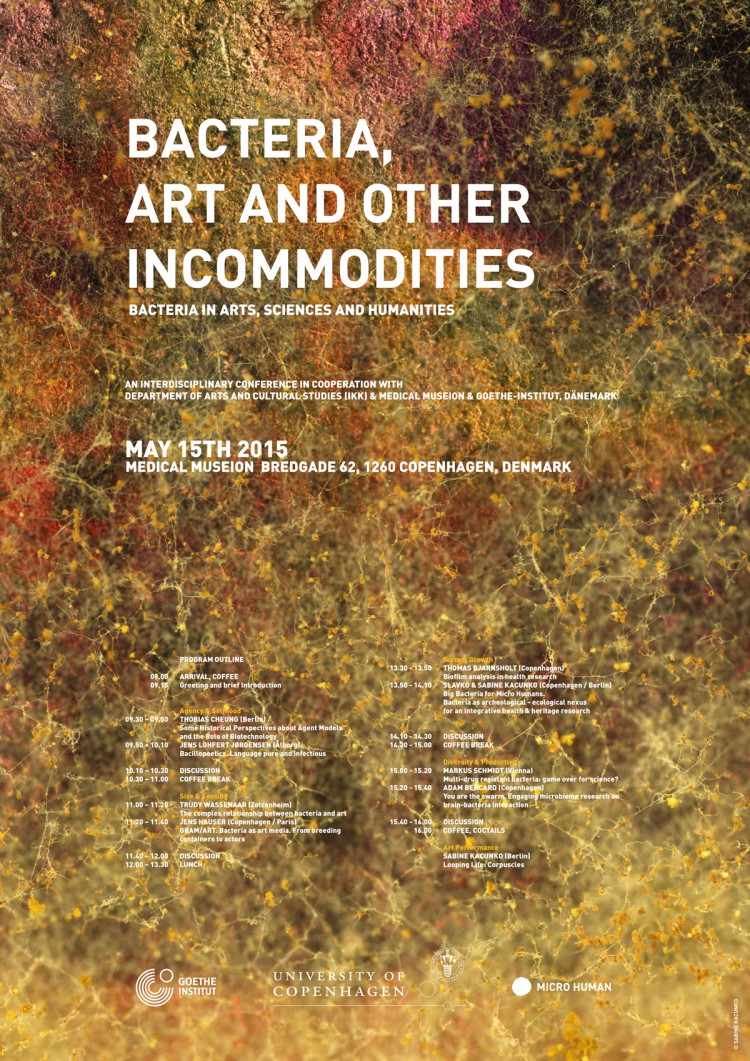
See more details here:
http://artsandculturalstudies.ku.dk/bigbacteria
BIG BACTERIA (BB) establishes an interdisciplinary research network between the natural and the health sciences, the arts and the humanities, in order to strengthen the latter in the light of rapid biotechnological advances and related worldviews. BB founded in 2014 by Slavko Kacunko and Sabine Kacunko.One of the long-term goals of the project, which starts with a public art performance INVINCIBLE and is planned to be continued through a subsequent cooperation of the artist with scientists and institutions from Rome Italy, Berlin Germany as well as Copenhagen Denmark; is to increase the public outreach of knowledge and sensitivity of societies to the transformations which affect public health, natural and cultural heritage. To achieve these goals, Big Bacteria will examine the role of bacteria as omnipresent tools for rethinking relations between the natural and the health sciences, the humanities and the arts.
As their taxonomy unambiguously suggests, bacteria are the facts of the permanently changing and sensing living matter. Microbial ‘dust’ and ‘patina’ represent an important case of bacteria´s agency to be systematized and related to the research on biodeterioriation (breakdown of materials by microbial action) and bioremediation.
Together with an international team of researchers from different disciplines, bacteria´s role as archeological-ecological nexus for an integrative health & heritage research will be experimentally explored, both on site and in the laboratory. The future framework of the project aims to profit from Kacunko´s and collaborators´ track record of conceptualization and visualization of the building of natural biofilm or patina in the natural- and cultural heritage context to conduct an exemplary case using the largest urban plant microcosm of the world and their unique archaeological sites with the longest records of plant- and natural biofilm growth and development – Coliseum in Rome. The natural patina formed on an object is an ideal breeding ground and medium for the forward evolving plant species not least qua biofilm.
This collaboration intends to pursue contacts with the researchers on site, established through the previous art-as-research collaboration by Sabine Kacunko (Micro Human, Berlin) and to analyze both chosen actual and archived examples of natural biofilm and the health plants in Coliseum (Prof. G. Caneva & G. Antonini, University of Rome), Biofilm Test Facility and Department for Arts and Cultural Studies (Prof. Thomas Bjarnsholt, Prof. Slavko Kacunko, University of Copenhagen) and other partners.
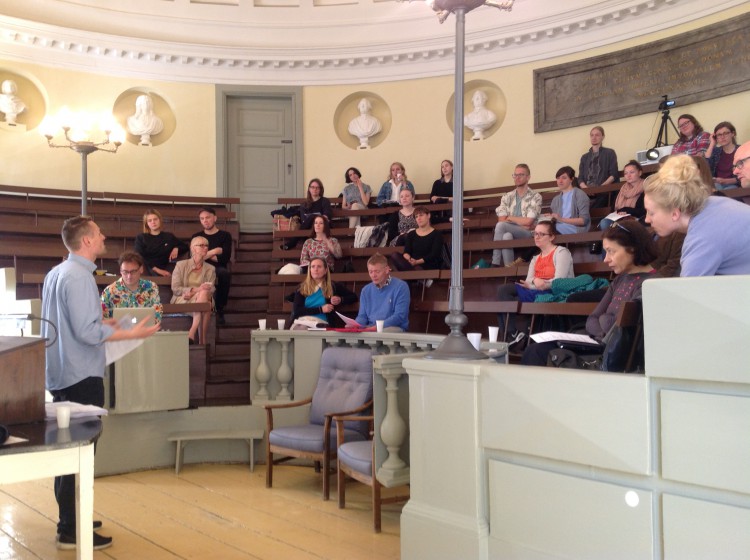
15th and 16th of May 2015 in Medical Museion and the IKK, University of Copenhagen, an international conference in cooperation with Goethe-Institut Dänemark will take place:
in which invited experts will discuss the potentials of the emerging network to entangle social, philosophical and industrially relevant thinking perspectives, those between art-based research and research-based art, architecture and art history as well as media- and literature studies to epistemology, medicine and synthetic biology.
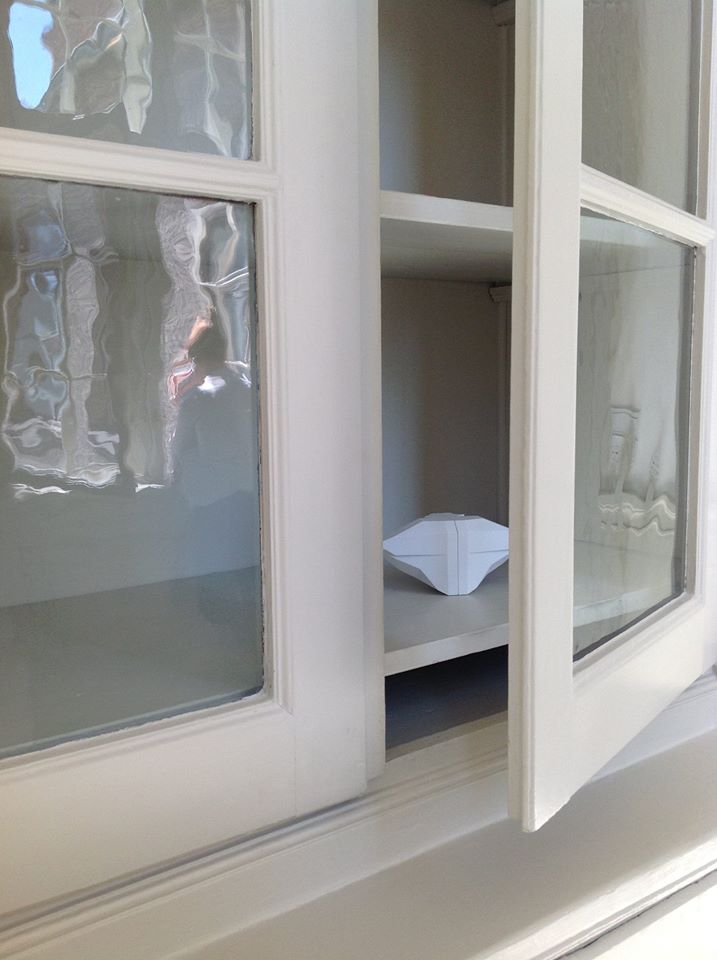
Bacteria in Art: LOOPING LIFE by the artist Sabine Kacunko present the interdisciplinary performance CORPUSCLES (May 15th 2015 12 – 6 pm in Medical Museion Copenhagen)
The performance, including two performers (Eija Ranta/Joris Joris Camelin) and a mobile sound sculpture, is a continuation of the artist´s bacteria art in recent years, for which Sabine Kacunko applied different methods of representation also used for medical diagnostics and the study of biofilms.
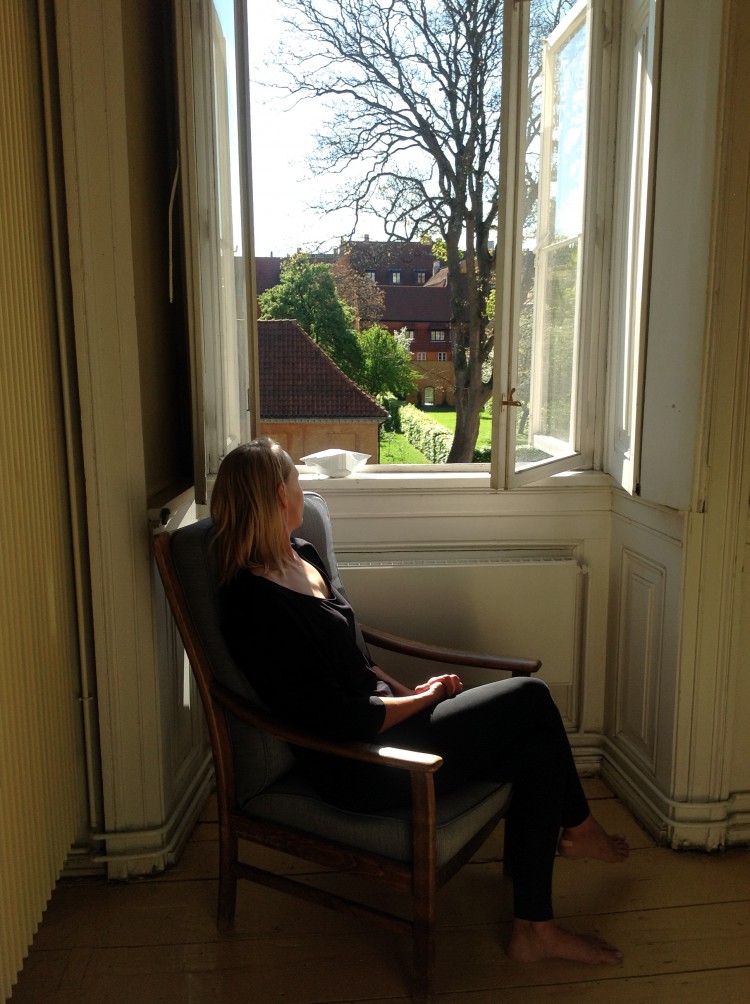
Technology
Audio data, generated in collaboration with Dr. Paul Modler (HFG Karlsruhe) serves as the basis for the current performance piece Corpuscles (a corpuscle is a tiny, free floating biological cell, especially a blood cell). The piece might best be defined as a mobile sound scultpure: a 3D model of the artist’s haemogram, or blood test, fitted with a speaker and emits atmospheric sound elements. The audio data is generated with the help of specially developed software that transforms into sound the reactions of symbionts to elements introduced to the cell environment by the artist.
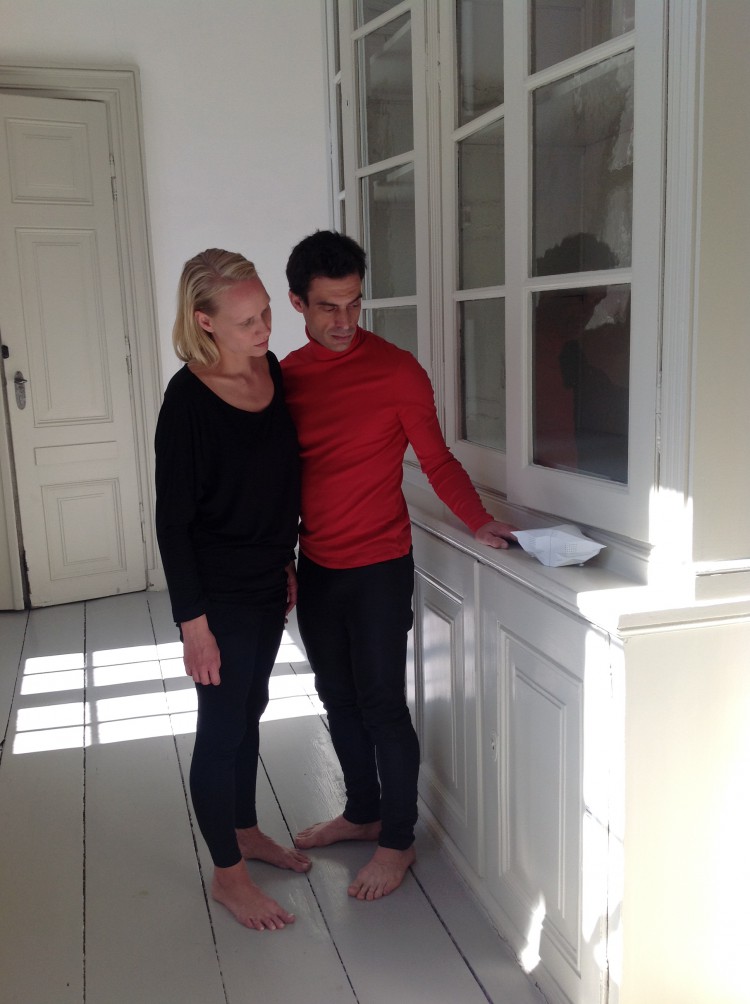
Dancers toss the “particle” to one another and members of the audience, or move the object through bodily contact with (volunteer) participants.
